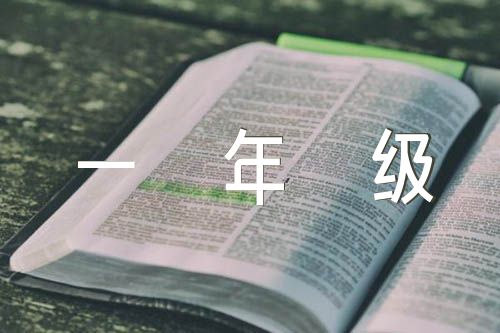【www.doubiweb.com--一年级上册】
以下是为大家整理的北京版一年级上册英语电子课本教材精选三篇,欢迎品鉴!

1.要养成静听,跟读,指读,模仿读的习惯,课内外听读时需做到耳听,眼看,手指。
2. 让孩子看一些儿童英语画报或小学版的英语辅导报,学会看图拼读英语单词,看图朗诵英语语句,看图说英语对话。让孩子学唱简略的英文歌曲、诵读英语诗歌、童谣,自编英语chant,看些英语动画或英文原声电影,比方小朋友耳熟能详的《米老鼠》、《白雪公主》、《灰姑娘》、《阿拉丁神灯》等经典动画片,让孩子能够在风趣的故事环境中快乐地学习英语。
3.孩子学习英语的爱好是最主要的,一年级以爱好为主,上课时老师会尽量把常识编成儿歌或顺口溜让学生来识记,孩子们都喜欢唱儿歌和顺口溜,能够很好地培养孩子的语感。家长要多和孩子沟通,多问问,今日学了些什么?有没有教儿歌?让学生感受家长也是很有兴趣知道学校工作的。
4.书本上的单词和语句尽量让孩子仿照磁带纯粹地道的发音来朗诵。上课所教授的内容为日子常用语和讲堂用语,家长可以回家帮助孩子一起温习。
1. 学习用具类:bag, book, pen, pencil, ruler,eraser, pencil-case, new,
复习建议:
搭配new组词:my new bag, my new book可以家长和宝贝比赛谁说的多
句型套用:This is my new… 边指边说
2. 人物类:his, her
能够区分人称代词,男用his,女用her (易混淆)
What"s his/her name?
3. 动物类:bird, cat, cow, dog, fish, frog, pig, duck,chicken, goat, sheep, turtle, rabbit,
horse, fish, pig, monkey ,bird, spider,tiger, lizard, crocodile, snake,
复习建议:熟悉动物叫声,剑一考试知识点,eg. 鸭子叫quack, 牛叫声moo, 狗叫声woof,鸭子叫quack,猫叫声meow, 鸟叫声tweet
区分易混淆动物类单词:goat &sheep , turtle &tortoise, alligator&crocodile(拓展)
4. 水果类:apple, banana, lemon, pineapple, grapes,watermelon, mango , coconut, kiwi fruit
pear, peach,orange, grapefruit, papaya, cherry, lime
复习建议:和颜色形状等结合,进行问答。eg. Apples are red. Monkeys like to eatbanana.
【拓展学习】strawberry草莓, blueberry蓝莓, blackberry黑莓, jackfruit榴莲,
litchi荔枝, plum李子,apricot杏
5. 蔬菜类:salsa, tomato, broccoli, pumpkin, potato,carrot, onion, pea, lima bean
【拓展学习】cabbage白菜,lettuce生菜,celery芹菜,eggplant茄子,green pepper青椒
6. 物品类:clock, baseball, table, desk ,box, hat, ,yo-yo, tennis, beanbag, fan, soccer,
toy, TV, mat, sofa, lamp
复习建议:游戏I spot 在家看到什么说什么
一般过去时
一般过去时主要用于:
1 、表示过去某个时间发生的动作或情况(包括习惯性的动作或状态)
e.g. When did you read the novel?
She often came to help us in those days.
2 、谈到过去的情况时
e.g. I didn`t know you were so busy.
3 、谈到已死人的情况时
e.g. Lei Feng was a great communist fighter.
与这个时态连用的时间状语常有:
yesterday, last night, the other day, two months ago, in 1985, then, just now,
when, after, as soon as 引导的时间状语从句,表示主句动作开始的时间。
一般现在时
一般现在时主要用于:
1 、表示经常性或习惯性动作。
e.g. It seldom snows here.
2 、表示现在的特征或状态。
e.g. He is always ready to help others.
3 、普遍真理。
e.g. Action speaks louder than words.
4 、剧情图片介绍,背景说明,动作解说。
e.g. (Tom enters the room_and_sits at the table)
Doctor : What`s your trouble, young man?
Tom : I`ve caught a cold, doctor.
5 、时间、条件、让步、方式状语从句表将要发生的动作时。
e.g. Tomorrow we shall go for an outing unless it rains.
与这种时态连用的时间状语常有:
always, often, never, seldom, usually, once, a week, now 等。
一般过去时现在完成时
一般过去时现在完成时主要用于:
1 、表示到现在为止这一时期中发生的动作或情况,即多次动作的总和。
e.g. We have learnt four English songs this month.
How many times have you read the novel?
For many days we haven`t seen each other.
2 、表示对现在有影响的某一已发生的动作。
e.g. The delegation has left 代表团已经走了(说明现在不在这里)
Look, what you have done. 看你干的事。
与这一时态连用的时间状语有:
already, yet, just, ever, never, by now, so far, recently, by the end of this month, since, for 短语,连词 since 引导的时间状语从句。
一般过去时与现在完成时的区别:
一般过去时:重在说明动作在过去发生时的具体情况(时间、地点、方式、对象、细节等)。
现在完成时:只提起已发生的动作(事实)及其影响,不说明动作发生时的具体情况。
cf. Have you had your lunch?
What did you have for lunch?
I have ever been to the Great Wall,_and_I went there last summer with my father.
注:现在完成时表达的动作常具有反复性,故下面一句是错的:
Have you seen the six thirty`s news program?
应改为:
Did you see the six thirty`s news program?